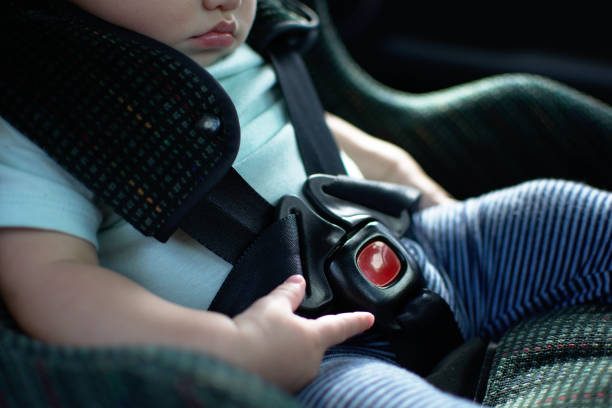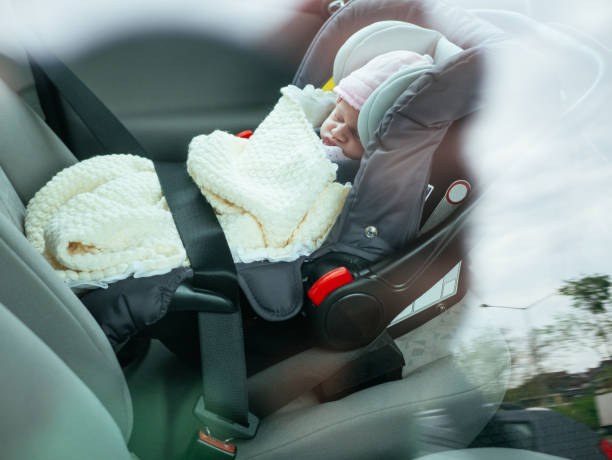How To Choose The Ideal Car Seat For Babies
Congratulations! You’re getting a child. Be sure to be save when driving. Check out which types of car seats are available in the market.
Being a new parent, the most important to consider is buying a car seat for your baby.
It is one of the few things you’ll buy for your child that could save their life. Moreover, you won’t take your infant home from the hospital if you don’t have it. This guide tells you what your child needs in a car seat, whether they’re two years old or ten months old.

There are three basic car seats for infants and toddlers: rear-facing, front-facing, and convertible, which convert from rear-facing to front-facing. The American Academy of Pediatrics (AAP) recommends making children safe inside the vehicle with rear-facing positions as much as possible until the child reaches the maximum weight or height capacity of their seat. Moreover, the AAP allowed kids to stay in back-facing seats until age 2, but the new recommendation removed that specific age. This article will teach you to choose the best car seat for your baby to guarantee safety
Infant Car Seats
There are two car seats for babies, and both are just as safe as the other. Which one you choose depends on what you like best and based on your trusted child car seat manufacturers. When you buy a car seat for an infant, you can select from the following:
Infant-only Car Seat
The infant-only car seat is the first seat that most new parents use. It can only be fitted rear-facing and features a removable carrier that links to a base installed in the vehicle. This car seat best fits newborns and smaller babies and is suitable for kids weighing between 4 and 40 pounds (depending on the model). Most kids will get too tall for these car seats before they get too heavy. A child is too tall for a car seat if the top of his head is less than 1 inch from the top of the carrier shell or if she is taller than the seat’s height limits.
Moreover, many parents prefer an infant carrier seat because it is removable from the vehicle without constantly unbuckling and waking a sleeping infant. The car seat base will stay attached to the car while the carrier just snaps into and out of the base. It is already a big help for new parents that the infant-only seats can be a stroller base. When shopping for an infant carrier, always look for one that can be used as an infant stroller.

Convertible Car Seat
After your child outgrows an infant seat, you must buy a convertible car seat not later than their first birthday. It is set up facing either backward or forward. A convertible car seat is used from birth. However, infant-only car seats are more comfortable for infants. It is best to select the one authorized to use the rear until the baby reaches at least 30 pounds.
The convertible seats are a good choice because they will last a long time. It can face either rear or forward seating. Most limitations let kids ride rear-facing. But convertible seats aren’t made to be taken out of the car.
All-in-One Seat
As a child grows, this seat can change from rear-facing to forward-facing (with a harness and tether) to a booster seat.
Toddler Car Seats
When your child outgrows the criteria for a rear-facing car seat, they should use a car seat with a harness for as long as possible or until they reach the maximum height and weight. When shopping for a car seat for a toddler who has outgrown a rear-facing seat, you can choose from the following:
Forward-facing Car Seat
Many forward-facing car seats can support toddlers weighing at least 65 pounds. Always check the manual hidden in one of your car seat to see the maximum height and weight. These suggestions do not apply to all car seats.
Combination Car Seat
Combination seats, sometimes called child/booster seats, are harnessed ones that face forward and can be turned into booster seats later. Some only change to a high-back booster, while others switch to a high-back booster and then a backless booster. This function uses a harness until the child reaches 40-65 pounds. The harness can be removed and converted to a belt-positioning booster when the kid weighs 80-100 pounds with the car’s shoulder or lap belt.
Preschooler Car Seats
When your preschooler is big enough for a forward-facing seat with a harness, it is best to switch them with a much better seat, a belt-positioning booster seat. This car seat can support your kids that weigh 80-100 pounds. Kids ages 3-4 or 8 years old will need booster seats. Here are the following booster seats you can choose from:
High-Back Booster Seat
This booster seat can make the child taller, so the seat belts are fitted correctly. It supports the child’s neck and head. Furthermore, it is great for cars without headrests or high seat backs.
Backless Booster Seat
A booster seat without a back increases the child’s height, so the seat belt fits properly. However, it does not help support the kid’s head and neck. It indeed works great for cars with headrests.
Conclusion
Safety should not be your least priority for your family. It does not happen, but you have to plan for it. As a parent, you should put your children’s safety first, especially inside the vehicle. Using the correct car seats when traveling with your baby can increase safety and avoidance of getting hurt in an accident. It is crucial to find the best car seats that are not just suitable but also safeguard your baby when you travel.
You have a story to tell. We want to help.
Let’s create memorable content and reach tens of thousands of people.